
6 minute read
Artistic Journey
Globe-trotter drawn to subjects she fell in love with on travels
By MARTINA SCHIMITSCHEK
Advertisement
Cathy Surgeoner Deibler’s wanderlust started at a young age with postcards she received from her globe-trotting great aunt. The Ballyclare, Northern Ireland, native graduated from the University of Ulster with a degree in applied and fine art. But the urge to travel prompted her to leave for New Zealand for two years. There, she learned how to surf and sail, discovering her love for the ocean — all things that have had a big influence on her artwork.
Surgeoner Deibler, who worked in the television and film industry prior to her New Zealand jaunt, sketched on her travels, which later included a teaching opportunity in Japan. But it wasn’t until she was married, living in Monterey, California, and had her first child that she took up art again. Surgeoner Deibler took a community college course there and started printmaking.
She had landed in Monterey with her now-retired Navy
OF CATHY SURGEONER DEIBLER
Octopuses are among Cathy Surgeoner Deibler’s favorite subjects. She's also working on a series of female big-wave surfers (left).
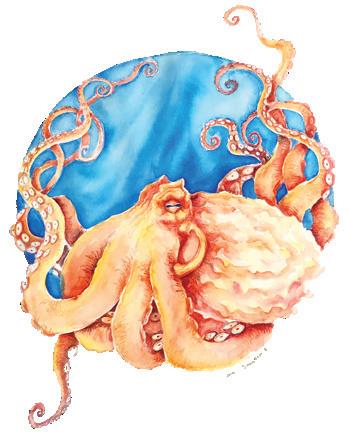
officer husband, Charles Deibler, after they married in 2011. They two had met in Japan. The couple, who moved to Coronado three years ago, have two children, 7 and 10.
Because the printmaking process requires chemicals, Surgeoner Deibler switched to watercolor, an easier medium with two youngsters. But she wants to add a studio to their home, which they bought last year, allowing her to return to printmaking.
She took some time to talk about her journey to become an artist and Coronado resident.
Q. You chose an art major at university. Did you always know you wanted to be an artist?
A. I wanted to be a businesswoman. I didn’t even see artist as something I could pursue. I remember thinking it’s just my hobby. I took math and physics as well as art, thinking I could prove that I was really intelligent and get an engineering degree like my sister. She is a civil engineer, and so I felt like I had to be doing something else, but art just kept coming back to me. And I thought, ‘Well, I’m really good at this,’ so I pursued it. I had no idea what I was going to do after college. I think I had more of a passion of wanting to travel.
Q. Why did you decide to go to New Zealand for your first extended trip from Northern Ireland? How did that trip influence you?
A. When I was about 26 years old, I was starting to get more freelance work in art and design, and I felt like if I don’t go now, I’m going to get stuck. I bought a ticket to New Zealand and, at the time, I didn’t even realize it was two islands. I just decided to go to the other side of the world and take an adventure by myself. It was such an amazing experience. I completely fell in love with New Zealand.
I learned to surf and to sail there. I had all these experiences that I would never have thought of doing back home. All these doors opened for me. I still surf.
I wanted to see places. And kind of in my head, I was looking for somewhere else to live as well. I can remember walking along the beach and thinking, ‘I could see my grandchildren here one day.’ But I did not fall in love with a Kiwi. I ended up falling in love with an American.
Q. Your Instagram page (@cathysurgeoner) has numerous images of octopuses. What is it you enjoy about them?
A. They’re such great creatures to paint. When you’re drawing their faces, they sometimes look like old men. They are just real characters, and I love the tenta- cles. I love intertwining the tentacles and manipulating them.
We made the garden in the shape of an octopus. When we took the grass off, I put the border that you use for (flower) beds in the shape of an octopus. We planted all succulents in the octopus shape and then the silver carpet ground cover everywhere else. Fingers crossed when it all grows in, you’ll see the actual tentacles coming across the garden. We did seven tentacles so I’m going to paint on the side of the house for the eighth tentacle.
I’m going to be the octopus lady, but I definitely love painting and drawing them.
Q. What other projects are you working on?
A. I’m working on a long-term series. I started painting big-wave surf women. I’m developing my watercolor skills and really wanted to get the ocean looking pretty good. I’m building up a series of these women because I find them such an inspiration. I’ve been surfing about 12 or 13 years on and off, but I still consider myself a small-wave surfer. When I watch the women surfing the big waves, I’m just blown away.
I definitely am following my heart with the style and what I paint and like.
Q. What do you like about watercolors?
A. I love watercolor because it’s pretty. It’s quite hard to do, but I love the layers and the transparency of watercolors. It’s kind of unforgiving. If you make a mistake, that’s it. But if you get something right, it feels really special.
Q. Now that you have bought a home in Coronado and are planning on staying, how are you getting involved with the local art community?
A. I do custom art lessons at your home with a small group. I’ll come to your house and bring the equipment and we’ll do watercolors. I’ll take you through my process and teach you basic skills. I highly encourage everyone to just find their own style.
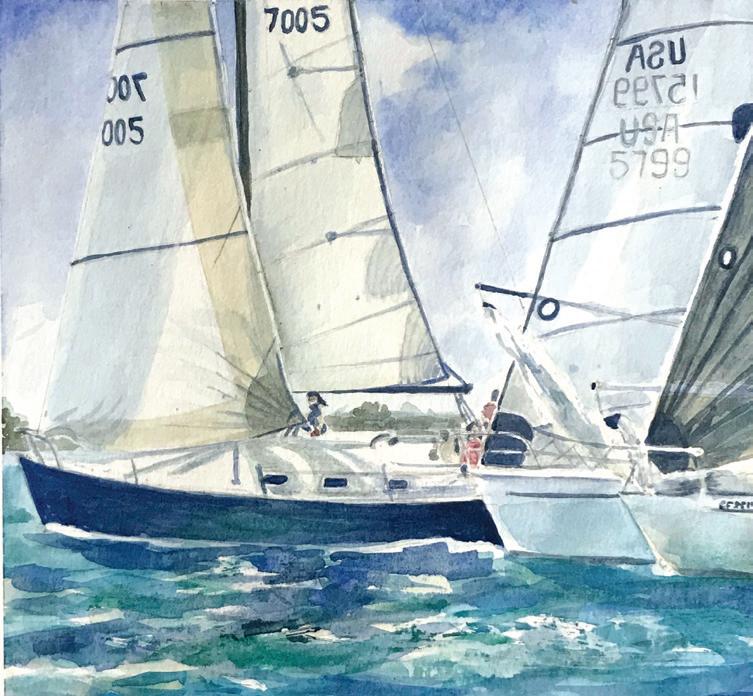
I just volunteered to go and sit on the board of CoSA (Coronado School of the Arts). I’m trying to get involved with the arts here because there’s quite a lot going on.
Up until last year, I didn’t know if we were going to be here or not. ■
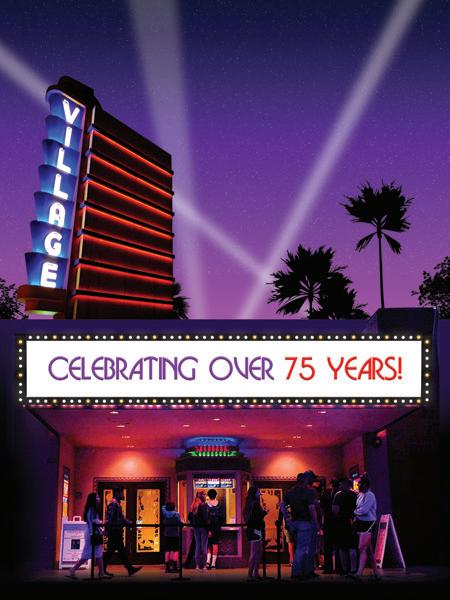




This Month In Coronado History
March 1, 1913
The Coronado Strand newspaper announced that construction was about to start on the first house in the district east of Pomona Avenue. The two-story home with eight rooms, two sleeping porches and two bathrooms was planned for Kate Rogan by the San Diego Construction Co. for $6,000. The site was described as lot 2, block 80, and was on the point jutting into Glorietta Bay. Plans to grade and pave all the streets in the area east of A Avenue with decomposed granite had made that part of Coronado desirable.
March 1, 1920
The U.S. Navy's dirigible Airship C-6, the first lighter-than-air craft constructed on the West Coast, took flight. The dirigible measured 196 feet in length with a capacity of 35,000 cubic feet of gas. The C-6 was the first of a fleet of lighter-than-air ships stationed at North Island. A dirigible hangar was constructed in 1919. A crew of six sailed the C-6 over the coast, then over Coronado, reaching an altitude of 1,000 feet. Thousands of people stopped to marvel at the wonder of this new type of aircraft.
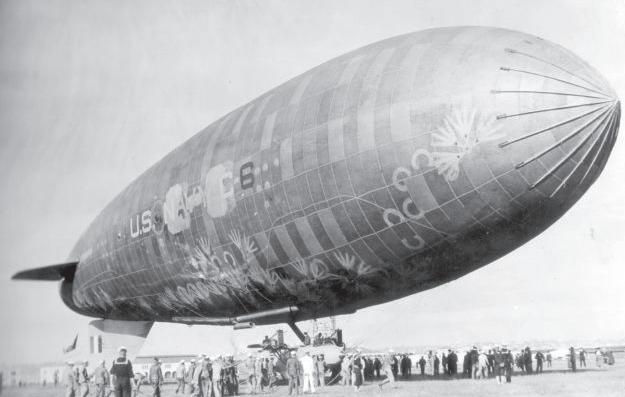
March 4, 1943
The Hotel del Coronado led the local Victory Garden campaign by planting vegetables in all the spare ground on the property. The idea was sponsored by the American Women’s Voluntary Services in Coronado, and many citizens also took up the idea by growing broccoli, corn, tomatoes, string beans, cabbage and cucumbers.
March 7, 1973
The three remaining Coronado Navy prisoners of war — Capt. Ernest M. Moore Jr., Cmdr. Edward H. Martin and Cmdr. William R. Stark — returned home to their families. Capt. James Stockdale and Capt. Harry Jenkins had returned three weeks prior along with Cmdr. Brian Woods, whose parents and a sister live in Coronado. Woods was the first POW to reach American soil. He was released and fast-tracked to the U.S. to see his critically ill mother, Anita Woods, in the Coronado Hospital.
March 9, 1976
Virginia Bridge takes office as the first woman elected as mayor of Coronado.
March 17, 1933
Renowned opera singer Inga Ørner returned to her Coronado home after nearly a year in England and France. Orner debuted her operatic career in Italy and sang in leading roles at New York’s Metropolitan Opera for three years. “Although I have been fortunate enough to visit a great many corners of the earth, I have not yet found a spot as charming as Coronado. There is no place that can compare with it,” she told the Coronado Journal.
March 24, 1906
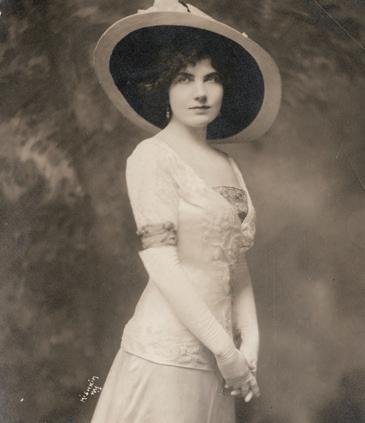
Coronado’s streets flooded after 2.25 inches of rain fell, and Ocean Boulevard was heavily damaged from heavy surf.
March 31, 1923
The Union Oil Co. revealed plans to construct an oil-and-gas station on the corner of Ninth Street and Orange Avenue, which was “promised will be one of the finest and most modern in Southern California,” according to the Coronado Strand. The station, “drawn up with a view to making the building harmonize with the natural and architectural beauty of Coronado,” would also include restrooms for its patrons. ■








